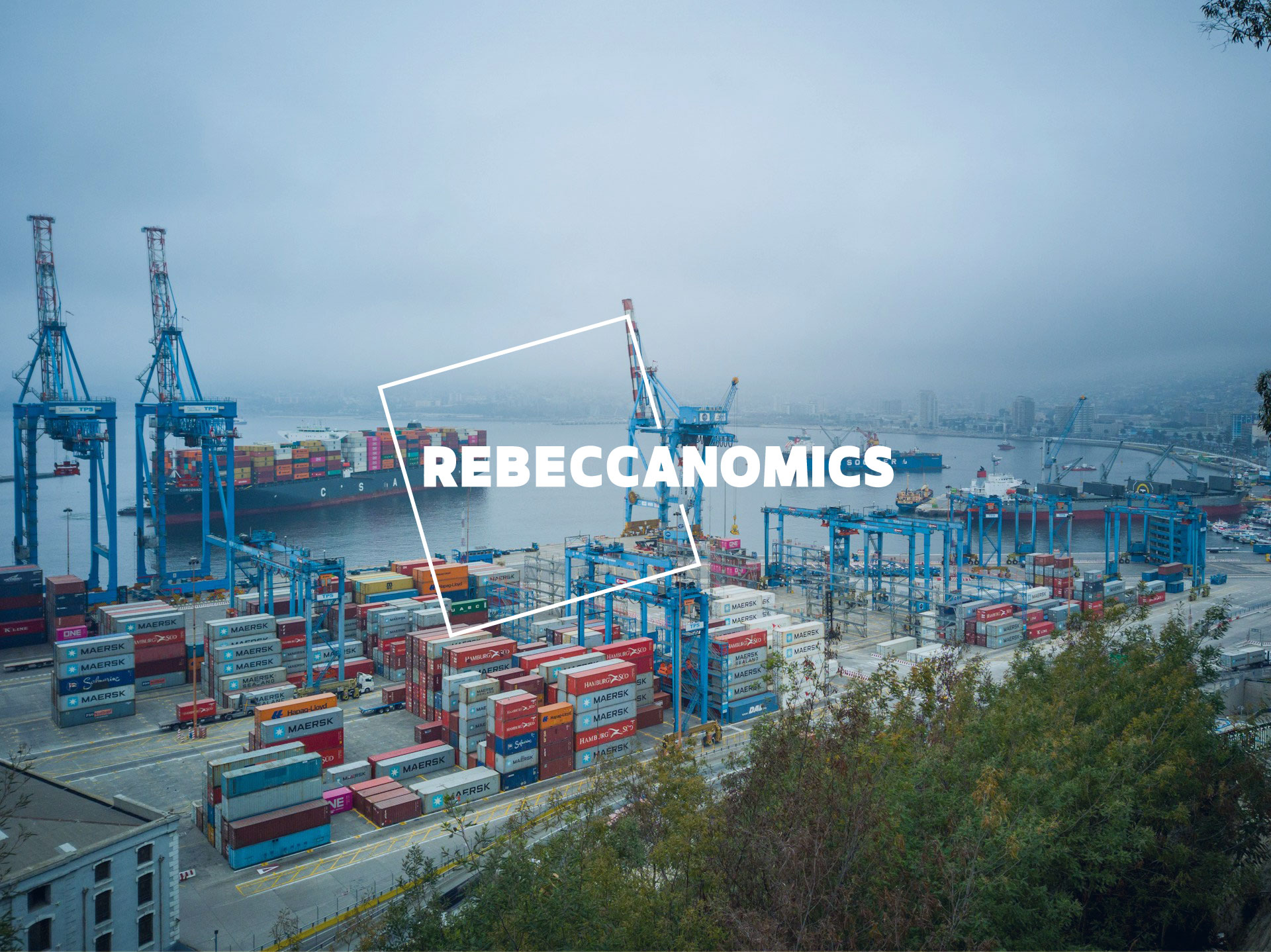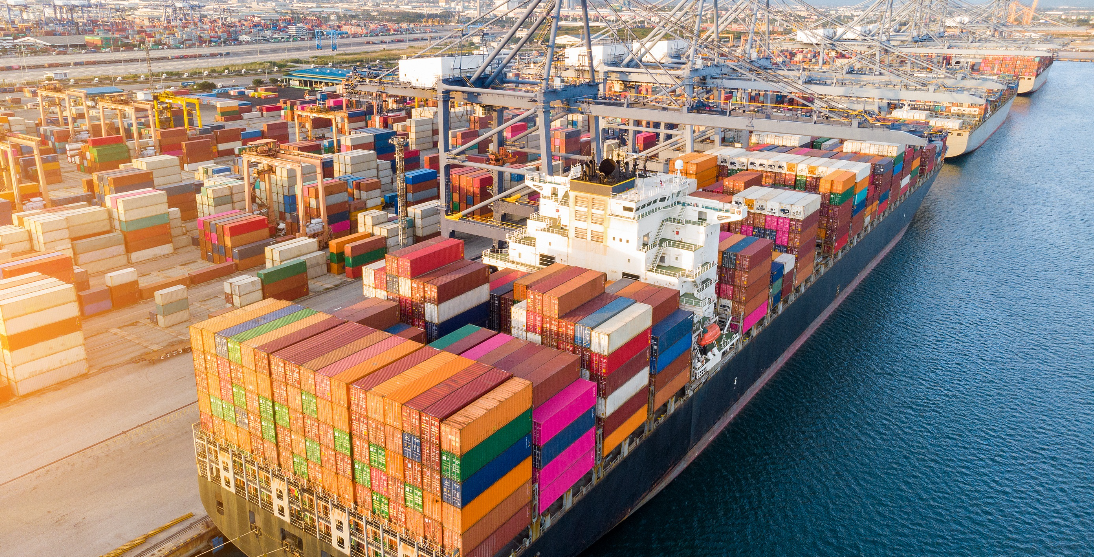
UK & DE Freight in 2024 and Beyond: A Supply Chain Logistics Case Study
Dive into the future of UK & DE freight: Adaptation, green logistics, and technological innovation shaping 2024 and beyond.

What do regulators know about measuring the world?[1] I ask this question somewhat flippantly, but GDP increasingly needs to incorporate sustainability if it is to give a fair measure the challenges the economic system has in mitigating climate change. And let’s not under-estimate the scale of that challenge. Rather like Alexander von Humboldt as he set out on his first journey to the Americas, all we know is that there is a lot we don’t know, so we need to find out more. Von Humboldt’s five-volume Kosmos can be bought under the title “Forgotten Books.” His comprehensive approach to “measuring the world”, provided the methodological framework for others to improve our understanding of the world.[2]
It would be wrong to recommend that regulators start with the Kosmos but there are lessons to be learned. Within the context of measuring ESG, we need to reconfigure the way we measure economic development, trade, growth and investment performance, and indeed, our whole value system on which post-industrial capitalism is based. In essence, we need to capture the inter-dependency between economic development, economic growth and the planet we live on.
In no sense can this be trivialized. In 2022 criticisms of ESG followed several things: a regulatory raid on Deutsche Bank’s investment arm, DWS, for greenwashing, a contrarian speech by Stuart Kirk questioning ESG as a valid investment tool, and some critical press on the subject at a later stage. This questioned sustainability either as an investment opportunity or as an area that financial organizations should be concerned about. The result is a mismatch between what regulators are trying to achieve and what investors are prepared to accept in relation to ESG and most of that comes down to effective measurement. Nowhere is this clearer than in the regulatory gulf that is emerging between the EU and the US – a regulatory stick on the one hand versus a subsidy carrot on the other.
Effective and appropriate measurement is key to reconciling the EU and US approach around any kind of enduring and enforceable regulation and incentivization. If we are to transition to a model where business, finance and economic activity is sustainable in every sense of the word, just like Humboldt, we need to be able to set a baseline and measure our progress against it without imposing developed world imperatives on an emerging world that has, almost by definition, a quite different starting point and perspective on the challenges ahead.
And in order to do this, the advocates of ESG need to take on board the criticisms of the whole movement as it stands at present. These are best summarised by The Economist in its Special Report on ESG Investing as follows:
On this reckoning, the sector is full of fluffy aspirations and good intentions that cannot be measured sufficiently well for investment or taxation purposes to be meaningful. So, the Economist advocates that we stop trying to measure the impossible and just measure what we can; the regulatory framework for this more limited scope is achievable and the market can do the rest.
The only way to argue with this type of economic reductionism is to address it head on. The Economist is right – measurement is difficult and at present, there are many things that cannot be measured consistently or meaningfully at all. This makes the industry reliant on the self-reporting of businesses who will always have an interest in “gaming” (or artificially improving) their responses because they will potentially get preferential terms on finance or investment. The ratings agencies diverge in their scoring mechanisms arguably so that they can arbitrage the imperfect information that is out there. The Economist, of all publications, should be aware of how this creates market advantage.
But just because something is ripe for the “too difficult” box doesn’t mean it shouldn’t be done. The Economist rightly identifies that there are weaknesses in how we define and measure the separate components of ESG, and absolutely correct to suggest that the UN’s Sustainable Development Goals (SDGs) are at best vague and at worst contributing to a sense that we are doing something when in actual fact, we are simply restating the problem, but with the appearance of action.
So, rather than starting with what we can’t measure, and what we cannot define, let’s start with what we can. Every business buys or sells a product or service, anywhere in the world. The UN itself has used the non-tariff barrier framework internationally to map these products to SDGs while the EU taxonomy matches sectors and activities into “does no significant harm” and “makes a positive contribution” frameworks. Similarly, because the emerging sustainability taxonomies, such as the EU Taxonomy, use sectors and activities, the products or services can be aggregated into sectors which then match to these emerging regulations. The OECD provides a product category-based framework for Greenhouse Gas (GHG) emissions that begins the process of measuring GHG within value chains.
The Economist points to emerging satellite data and argues that it is potentially a way to creating better measurements for environmental progress but less so for the ‘S’ and the ‘G’. But other data sources exist. For example, by integrating company asset data globally with reliable and consistent news feed data, it is possible to reduce the reliance on self-reporting while satellite data becomes more comprehensive in the capacity to measure, for example, human rights violations on a geospatial basis.
This is only the beginning of the process of measuring ESG and there is a lot of work to do. There are few ways to over-state the problem: it is little short of an attempt to measure economic, trade and financial activity in terms of its contribution to planetary welfare – which arguably includes economic growth and development in an attempt to make that activity sustainable.
Simon Kuznets, the Chief Statistician of the US War Production Board is credited with creating the mechanisms to measure national income, or GDP, quantitatively – the economist’s equivalent of Humboldt perhaps. He started work to develop the measure national income, or GDP, in order to explain how long-term economic trends developed over time, and how wartime economies differ in terms of planning and structure to peacetime ones in the 1920’s. He had his sceptics at the time and to this day, economists argue about whether or not GDP is the appropriate metric for economic growth given the other challenges that the world faces. However, the need to measure economic activity quantitatively is not disputed; it is the principal way of explaining, comparing, and creating policy tools to improve economic activity.
So the challenge is to make that economic activity sustainable – for people, for the planet and for long-term our long-term security. There is nothing idealistic about this – it is pure pragmatism based on necessity – for regulatory reasons in the first instance, but also because it is the right thing to do if we want to understand how economic activity needs to change. In a world of Big Data and technology, saying something cannot, or indeed should not, be measured is complacent, inexcusable and irresponsible, even if the journey encompasses the whole world.
[1] Daniel Kehlmann, (2007) “Measuring the World” Quercus Books, London (translation from the original German). I unashamedly use the same title, and refer to Alexander von Humboldt’s Kosmos as these respectively show the scale of the journey on which we need to embark and the amount of work that will need to be done.
[2] Egerton, Frank N. “Humboldt, Darwin, and Population.” Journal of the History of Biology, vol. 3, no. 2, 1970, pp. 325–60. JSTOR, http://www.jstor.org/stable/4330545. Accessed 10 Feb. 2023.

Dive into the future of UK & DE freight: Adaptation, green logistics, and technological innovation shaping 2024 and beyond.

Join Dr. Rebecca Harding in a crucial discussion on sustainability in economics. Dive into why regulators must evolve GDP metrics to include sustainability for an accurate portrayal of our climate challenges and the journey towards actionable global solutions.

Explore the intricate relationship between trade fragmentation, geopolitics, and supply chain resilience with Dr. Rebecca Harding. Learn why understanding the political landscape is crucial to making economic sense and how strategic trade is shaping the 21st-century battleground.

Uncover the strategic necessity of Supply Chain Resilience in our latest piece by Dr. Rebecca Harding. Discover how today’s trade becomes a domain of warfare and why intelligence in supply chains forms the New Tradecraft in safeguarding national security.

Discover how biometric technology could revolutionize global trade, offering seamless and secure cross-border transactions by reducing inefficiencies at customs and immigration, with real-time tracking and smart contract integrations, promising a future of frictionless international commerce.
Contact
Services
About
Insights
Rebecca’s Bio
Terms and conditions
Privacy